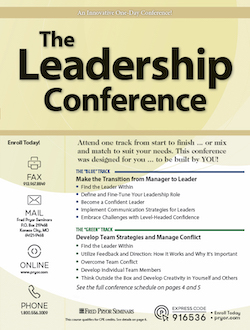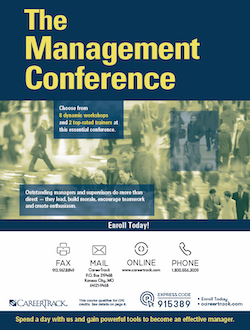Implementing an Employee Recognition Committee
- Author: Pryor Learning
- Categories:
- Tags:
- Share on:
 The benefits of a happy workforce are compelling: improved retention, increased productivity, reduced absenteeism. A survey by the employee recognition consulting company, Globoforce®, indicates that happy employees are 85% more efficient and 10 times less likely to take sick leave. Globoforce also discovered that peer recognition is a powerful motivator with employees 107% more likely to identify themselves as highly engaged when they were able to recognize their peers for good work[1].
The benefits of a happy workforce are compelling: improved retention, increased productivity, reduced absenteeism. A survey by the employee recognition consulting company, Globoforce®, indicates that happy employees are 85% more efficient and 10 times less likely to take sick leave. Globoforce also discovered that peer recognition is a powerful motivator with employees 107% more likely to identify themselves as highly engaged when they were able to recognize their peers for good work[1].
Many organizations establish Employee Recognition Committees to develop and manage recognition programs. Here are some tips to get one off the ground in your business or department with recommendations from Indiana State University[2]:
- Determine Who Will Serve on the Committee – Include members from both management and staff to honor interests from both groups. Use the following ideas to select committee members:
- Solicit for volunteers
- Election by peers
- Appointment by management
Important tip: Specify how long members serve on the committee so they understand their time commitment
- Specify Objectives – Design your Employee Recognition Committee with the following guidelines:
- Meets the needs of employees
- Reinforces behaviors that benefit company goals
- Honors the company’s mission statement and core values
- Maintains clear standards so rewards are both meaningful and equitable
-
- Determine Incentives – After the committee identifies the program objectives they can identify the criteria by which employees are eligible, evaluated, then recognized or rewarded.
This is the fun part of the task! Survey employees to find out what types of recognition are meaningful. Don’t just assume that a financial reward or public praise works for all people. Then, match those motivators with company offerings. For example, employees who wish to be recognized for skill development can send a signal to management that training opportunities are appreciated.
- Monitor and Adjust – Once the program is underway, the committee should monitor results, solicit feedback and adjust the program as needed.
An Employee Recognition Committee’s final key responsibility is to communicate the program to both management and employees. A study produced by Bersin & Associates, a human resources consulting company, discovered that while 75% of companies surveyed have recognition programs, only 58% of employees surveyed think their companies do[3]. Both management and employees need to understand, accept and then use the program to gain the benefits it offers.
[1] http://go.globoforce.com/rs/globoforce/images/WP_Culture_Globoforce.pdf
[2] http://www.indstate.edu/humres/docs/GuideEmpRecognition7-25-11.docx
[3] https://www.bersin.com/News/Content.aspx?id=15543
Choose a Seminar and Save $10
Styles & Strategies to Supervise Effectively
1 Day
- CEU: 0.6
- CPE: 6
Team Training - Virtual or In-person

Spark Innovation and Think Strategically
1 Day
- CEU: 0.6
- CPE: 6
Team Training - Virtual or In-person

How to Manage Remote Employees
1 Day
- CEU: 0.6
- CPE: 6
- HRCI: 5.5
- PDC: 6
Team Training - Virtual or In-person
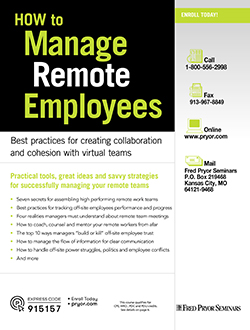
How to Supervise People
1 Day
- CEU: 0.6
- CPE: 6
- PDC: 6
Virtual Seminars:
-
Apr 17
-
Apr 22
-
Apr 24
-
+ 25 more dates
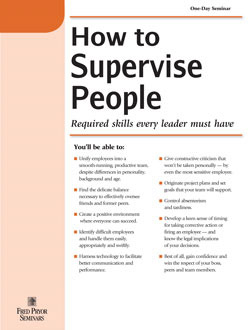
Facilities Management - A 2-Day Comprehensive Course
2 Days
- CEU: 1.2
- CPE: 12
Virtual Seminars:
-
Apr 23-24
-
Apr 29-30
-
May 1-2
-
+ 24 more dates
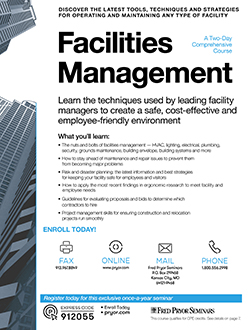
Managing with Assertive Confidence
1 Day
- CEU: 0.6
- CPE: 6
Virtual Seminars:
-
Apr 22
-
May 8
-
May 13
-
+ 2 more dates

Leadership, Team-Building and Coaching Skills for Managers and Supervisors
1 Day
- CEU: 0.6
- CPE: 6
- HRCI: 5.5
- PDC: 6
- PDU: 6
Virtual Seminars:
-
Apr 17
-
Apr 18
-
Apr 22
-
+ 40 more dates
In-Person Events:
- Apr 22, Indianapolis, IN
- Apr 23, Chicago, IL
-
+ 19 more dates

Transitioning to Supervisor
1 Day
- CEU: 0.6
- CPE: 6
Virtual Seminars:
-
Apr 17
-
Apr 18
-
Apr 22
-
+ 41 more dates
In-Person Events:
- Apr 22, Phoenix, AZ
- Apr 23, Ontario, CA
-
+ 14 more dates
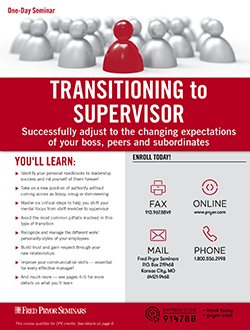
Leadership & Management Skills for Women
1 Day
- CEU: 0.6
- CPE: 6
Virtual Seminars:
-
Apr 17
-
Apr 29
-
May 7
-
+ 8 more dates
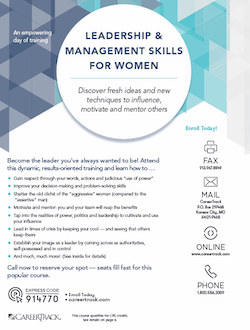
How to Supervise Bad Attitudes and Negative Behaviors
1 Day
- CEU: 0.6
- CPE: 6
- HRCI: 5.5
- PDC: 6
Virtual Seminars:
-
Apr 17
-
Apr 22
-
Apr 25
-
+ 18 more dates

Management & Leadership Skills for New Managers and Supervisors (2-Day)
2 Days
- CEU: 1.2
- CPE: 12
Virtual Seminars:
-
Apr 17-18
-
Apr 22-23
-
Apr 24-25
-
+ 32 more dates
In-Person Events:
- Apr 29-30, Denver, CO
- May 1-2, Portland, OR
-
+ 20 more dates

How Managers Become Great Leaders
1 Day
- CEU: 0.6
- CPE: 6
Virtual Seminars:
-
Apr 17
-
Apr 18
-
Apr 23
-
+ 16 more dates
In-Person Events:
- Jul 22, Nashville, TN
- Jul 25, Las Vegas, NV

A Crash Course for the First-Time Manager or Supervisor
1 Day
- CEU: 0.6
- CPE: 6
- HRCI: 5.5
- PDC: 6
Virtual Seminars:
-
Apr 18
-
Apr 22
-
Apr 24
-
+ 27 more dates
In-Person Events:
- Jun 13, Phoenix, AZ
- Jun 18, New York, NY
-
+ 2 more dates

Criticism & Discipline Skills for Managers and Supervisors
1 Day
- CEU: 0.6
- CPE: 6
- HRCI: 5.5
- PDU: 6
Virtual Seminars:
-
Apr 23
-
May 6
-
May 15
-
+ 13 more dates

The Indispensable Office Manager
1 Day
- CEU: 0.6
- CPE: 6
Virtual Seminars:
-
Apr 23
-
May 1
-
May 6
-
+ 5 more dates

Be the Manager Your Employees Want to Follow
1 Day
- CEU: 0.6
- CPE: 6
- PDC: 6
Virtual Seminars:
-
May 5
-
May 8
-
May 14
-
+ 5 more dates
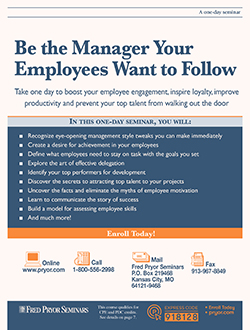
How to Improve Employee Accountability with Remote and In-Person Teams
1 Day
- CEU: 0.6
- CPE: 6
- PDU: 6
Virtual Seminars:
-
Jun 3
-
Jun 9
-
Jun 18
-
+ 5 more dates

The Exceptional Team Leader
1 Day
- CEU: 0.6
Virtual Seminars:
-
Jun 3
-
Jun 9
-
Jun 18
-
+ 5 more dates



